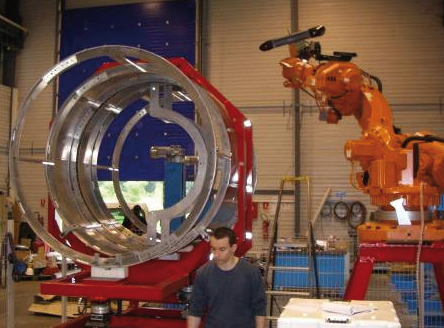Creaform also lands $500k investment from Canadian government
MONTREAL – “Last year was a very good year,” said Creaform president Charles Mony. “We were able to see 37.5 percent growth, in all our divisions.” That followed a 2010 where the company purchased both scanning services company Genicad and white-light technology developer InSpeck. And 2012 is shaping up pretty well for the 3D scanning and optical measurement firm, too.
Recently, the company landed $500,000 in new funding from the Canada Economic Development’s Business and Regional Growth program. Creaform then announced news last week it had entered into a five-year technology partnership with global aerospace and defense firm EADS to develop new applications for scanning and optical 3D measurement.
It’s an indication that both Creaform, and the laser scanning technology the company both manufactures and provides services with, are being increasingly accepted by industry and business at large.
“When you launch a new technology and a new company,” Mony said, “year after year, you have to prove yourself. But as you grow, and people find success with the technology, things start to get a little easier.” After launching its first handheld scanner, the Handyscan line Creaform has grown into six different models, in 2005, with the majority of its business in the automotive marketplace, the company has moved into software and laser scanning services and now finds 40 percent of its business comes from the aerospace market.
“We started to make inroads in aerospace in 2008,” Mony said, “and the main reason is that quality control is really required in each step of manufacturing. It’s not as simple as automotive, where there’s a lot of quality inspection right up to production, and then you might have a sample verification of a complete part. In aerospace, there is more control in each step of the manufacturing.”
EADS has seen “huge potential” for the use of scanning and optical measurement in their business, Mony said, both for their own processes and for their customers, but that potential can’t be realized without creating standard operating procedures for beneficial applications. Hence the partnership with Creaform.
“I always compare the scanner with the iPad,” Mony said. “If you have an iPad without any applications, it’s nice, you can play with it, but you can’t do much without the applications.” Creaform has also funded a group at Laval University in Quebec City to research innovative uses for the technology.
The best thing about the partnership with EADS, Mony said, is that it’s not constrictive. Any applications developed as part of it can be made available to the market at large by Creaform.
So, what kind of applications are we talking about here? It would seem that using scanning and metrology for both quality control and reverse engineering is fairly mainstream at this point, no?
It is, Mony agreed, and the quality control piece of that is much bigger than the scan-for-modeling market. Even as these applications have matured, though, they haven’t been taken far enough, he said. “In quality control,” he said by way of example of something new, “we’ve done applications now where we scan existing pipeline and we’re able to analyze where there might be a lack of material and confirm if the pipeline is good to continue or is in need of repair.”
“Scanning started in design initially to get a 3D model, but it’s more than that today,” he said. “Scanning will move into the full product life cycle, from design to production and then when your product is in service.”
Further, he sees the long- and short-range markets converging. “The hardware is different,” he said, and it will stay that way, “but, in the end, because 3D is coming everywhere progressively, people will want everything in one place, from the micro level to the macro level. You can’t take the same hardware and scan a bridge and a small part, but in the end, there will be software that will deal with both.”
He notes that the scan-to-model workflow that still confounds many in BIM and other long-range scanning applications isn’t all that different from the workflow that used to exist in reverse engineering. “In 2005,” he said, “when we launched the Handycam, it was much the same. One hour of scanning was eight hours of post treatment.” Now, with the company’s current software, VXelements, there is instant scan-to-model, so that a mesh surface model is created on the fly. There is no point cloud in the middle.
“I’m sure there would be great value to something like this in long-range scanning,” he said, in a bit of an understatement.
“That’s where we need to invest so much,” he said. “The hardware in long-range is working very well, but with the software there’s still a lot of room for improvement … I think there’s a great deal of potential for working crossover to the two areas.”






